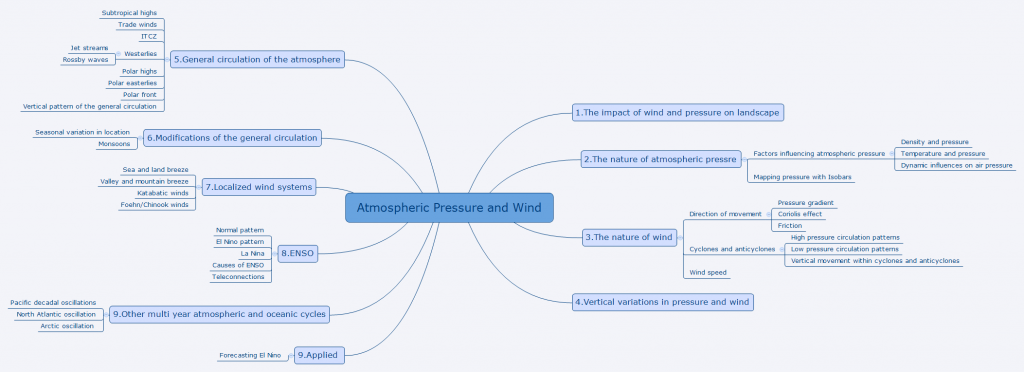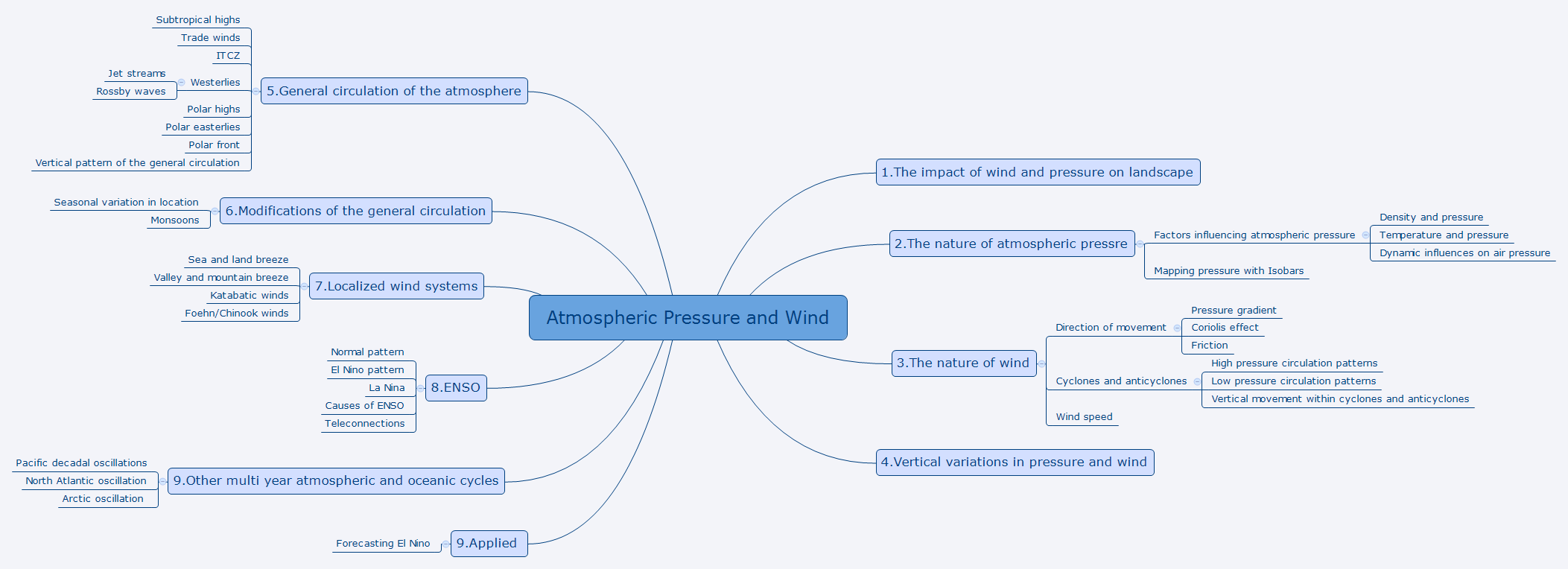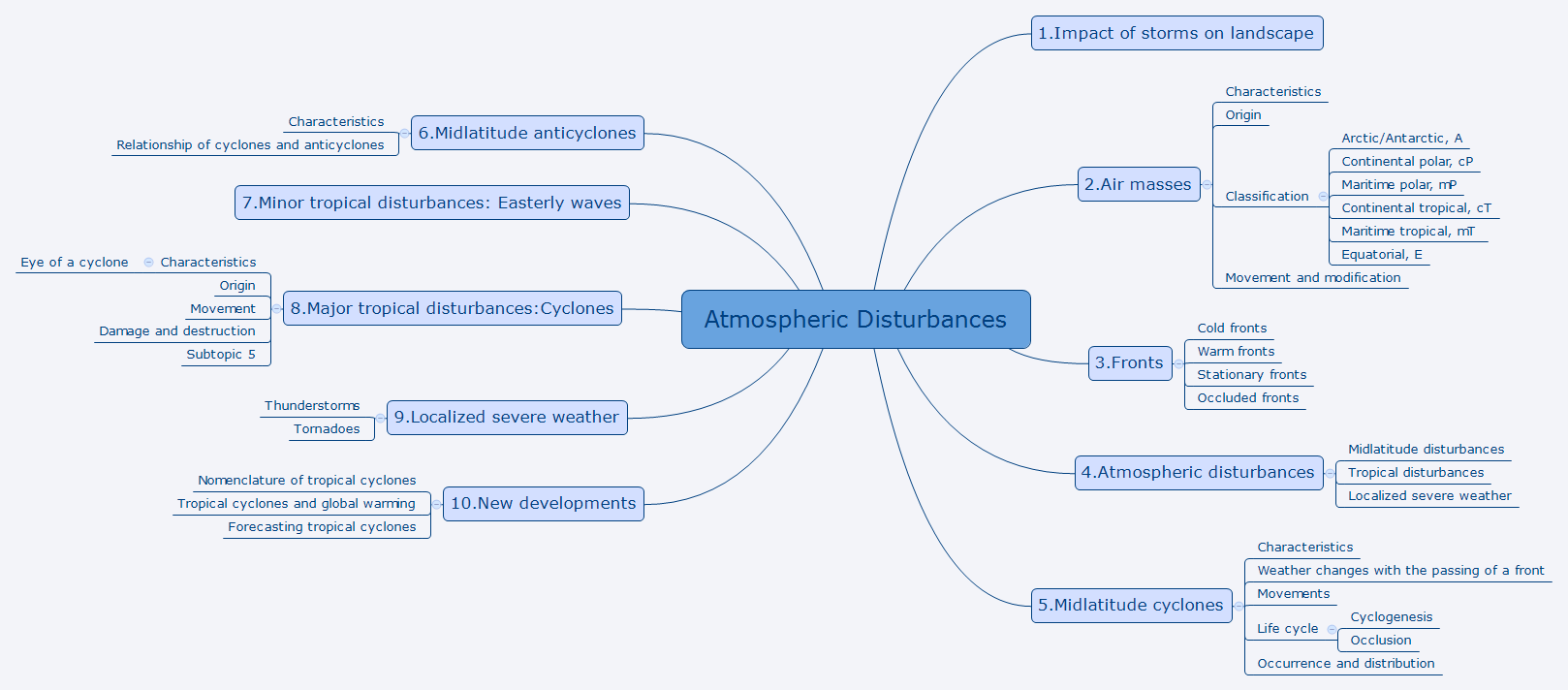Climatology
Paper-I
- Temperature and pressure belts of the world
- Heat budget of the earth
- Atmospheric circulation
- Atmospheric stability and instability
- Planetary and local winds
- Monsoons and jet streams
- Air masses and frontogenesis
- Temperate and tropical cyclones
- Types and distribution of precipitation
- Weather and Climate; Koppen’s, Thornthwaite’s and Trewartha’s classification of world climates;
- Hydrological cycle
- Global climatic change and role and response of man in climatic changes
- Applied climatology and Urban climate
Paper II
- Mechanism of Indian monsoons and rainfall patterns
- Tropical cyclones and western disturbances
- Floods and droughts
- Climatic regions
Contemporary issues
- Tsunamis, floods and droughts
Current affairs
- Monsoon prediction techniques
- El Nino, its consequences and prediction
- Recent tropical cyclones e.g. Hudhud, Neelam etc
- Cloud burst, Uttarakhnad and J&K disasters
- NAPCC
- Climate change negotiations at UNFCCC etc
Sources and Resources
- NCERT, Class XI Physical Geography
- GC Leong
- Mcknight’s Physical Geography
- Atmosphere, Weather and Climate by K. Siddhartha
- Geography through Maps by K Siddhartha
- Any good reference Geography dictionary
- Physical Geography by Savinder Singh
- Atlas
- Issues of Geography and You
Strategy
Climatology is one of the most important components of the UPSC Geography Mains syllabus. You can expect at least 3-4 questions in Paper I of Geography Optional. It means by preparing this section well, you can be rest assured about 30-50 marks from the UPSC kitty. Now let us talk about the multiplier effect of this component of the syllabus. It shall help you in answering questions related to Indian climate in Paper II of the optional and also GS Paper II. In fact questions asked in GS in the past were more specific and analytical than the questions of optional!
Moreover, by preparing this portion comprehensively shall give you at least 6-8 marks in prelims. So, it means that cost benefit analysis of this portion of the syllabus highly favors a comprehensive preparation of Climatology.
Focus Areas
The soul of the syllabus of Climatology lies in understanding of various atmospheric phenomena, their causative factors, their impacts on earth and mankind, modifications caused by natural and anthropogenic factors and finally their applications.
You can expect questions emanating from this soul. Hardly ever UPSC has asked any question that goes beyond this.
Imperatives
To answer the questions related to climatology, you need to have some basic tools and equipments without which your answers shall be blunt in their impact. While you prepare, your focus must be on the answer sheet that you would write upon in the coming few months. Developing these tools now shall help you enormously then. So the imperatives that you must acquire during your course of preparation of climatology are as follows:
- Mind map of the topic
- Definition of all the terms and terminologies
- Knowing specific and relevant words that are used frequently for the topic
- Diagrams,figures and presentation to aid your presentation
- Examples of the phenomena; both at global and Indian levels
- Spatial distribution of the phenomena i.e. maps
- New developments if any
- Applications and exceptions
Moving forward, we present you a case that demonstrates our strategy. Suppose we want to understand about atmospheric pressure and planetary winds. We shall approach the topic in the flow described above:
Mind-map: This is to remind us of the scope of the topic i.e. what all we mean to cover. It happens many a times that we lose a tab of where we started, what we are reading and for what purpose after we have entered deep into the pages of any chapter. Mind-maps avoid this situation and we are always aware of our position. Later we shall also demonstrate as to how mind maps can be used for quick revision and to write quality answers. But first have a close view of the mind map for this topic. You can zoom in the image for better view. Click on them

The mind map above gives you a fair understanding of the content of the topic. Now, you have to build upon this mind map and approach with our next step.
Definition of all the terms and terminologies: While reading the chapter, jot down all the terms and terminologies on a separate piece of paper. After you are through with the chapter, expand these terms and terminologies in not more than 30 words. Avoid describing the whole concept. Just a line or two shall suffice. Here is an exhaustive list of all such terms and terminologies related to the mentioned topic. These are in addition to the terms and terminologies used in the mind map.
- Thermal high
- Thermal low
- Dynamic high
- Dynamic low
- Isobar
- Geostrophic winds
- Horse latitude
- Doldrums
- Antitrade winds
- Santa Ana breeze
- Walker circulation
Knowing specific and relevant words that are used frequently for the topic: Revise the terms and terminologies periodically and try to use them as much as possible in your answers. For example a Geography student can’t write that air expands when it rises and its temperature decreases. He/she must have a fair collection of relevant words to describe anything in a geographical sense. So, here he/she must say that upon ascent, adiabatic expansion of air takes place and the temperature of the air parcel decreases at adiabatic lapse rate.
Diagrams,figures and presentation to aid your presentation: One must master these to improve the outcome of learning and more importantly to impart weight to one’s answers in the paper. You can create an album of self drawn figures and diagrams and refer to it regularly to retain the pictures forever in your mind. Practicing these diagrams is a must as during examination, your hands don’t move if there is lack of practice. Remember one thing though. Do not complicate your diagrams. Your diagrams should be simple, standard and lucid. You can refer books and internet for the same. It would be great if you have at least one diagram in mind for all the topics.
Examples of the phenomena; both at global and Indian levels: Your theoretical understanding is of no use if you don’t supplement it with examples. Enumerate as many examples for the concept as it shall improve your understanding as well as the quality of your answers. For example if you have understood the concept of sea breeze, you must know and in fact learn by heart it’s examples.
Spatial distribution of the phenomena i.e. Maps: There is no substitute to Maps in Geography. Neither your knowledge is complete without maps nor your answers shall carry adequate weight without them. Therefore, focus upon spatial distribution of phenomena. You don’t have to be precise with it but at least you should have rough idea regarding spatial distribution of atmospheric phenomena. Consider for example, while writing an answer regarding trade winds, you must be able to draw a rough map showing the prevalence of trade winds on the globe.
New developments if any: UPSC has the habit of asking questions regarding latest developments in the field. For example, last year UPSC asked a question on Monsoon prediction techniques. You are supposed to keep a tab on such developments through a cursory view of news papers and magazines. Incorporate such information in your notes for easy reference and revision.
Applications and exceptions: Applied Climatology is a separate topic mentioned in the syllabus. However it runs as a continuous theme in all other topics. Identify such applications and make separate notes for the same. Similarly, exceptions should also find a mention in your notes and answers as they enrich the quality. For example, although El Nino event is associated with drought in many parts of South and South East Asia, occasionally normal and even above normal precipitation have been observed during an El Nino year. If you incorporate such points in your answers, it shall reflect your in depth knowledge and fetch you better marks.
- While you start with the strategy explained above, we assure you that you shall be getting some high quality questions in the coming few days. These questions have been designed to test your analytical skills and your ability to apply the knowledge that you have gained from your study.
- To help you further, we have prepared mind maps that covers the entire syllabus of climatology. You can think of devoting not more than 10 days to cover this component.
- Divide your time judiciously and learn the concepts as per mind maps in the sequence provided below.
- Basic concepts

- Insolation and temperature

- Atmospheric pressure and wind

- Atmospheric moisture

- Atmospheric disturbances

- Climate and climate change

- Hydrosphere

Share your thoughts and feedback. Form a community and let us proceed in this journey 🙂
Join us and cement your preparation with the true guidance at your doorstep
Best Wishes
IASbaba










